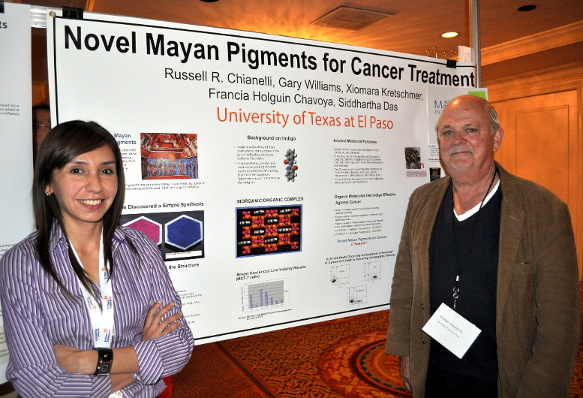On Saturday, Oct. 26 hundreds of local biomedical researchers, including students from The University of Texas at El Paso, came together to discuss health concerns and potential solutions at the first-ever Biomedical Research Symposium.
“We’re here to let the community know that there’s biomedical engineering research going on at UTEP,” said Mario Rodriguez, a graduate student in mechanical engineering.
For Rodriguez, his particular interest lies in the development of a medical device to help people who suffer from severe fractures or shattered bones.
“When you have any problems with bones, let’s say a fracture, and you lose a piece of bone, it is possible to regenerate that bone,” he said. “You just have to put two pieces of bone together and distract them at a controlled rate. We’re creating an internal device to control that.”
The common procedure, known as distraction osteogenesis, plays on natural bone regeneration by gradually pulling two segments of bone apart so that new bone can regenerate within the gap. In order for the regenerating bone to grow and set properly, patients must undergo a painful surgery and wear a large external fixation device, or frame.
“It’s a circular frame surrounding the leg and there are a lot of pins coming into the skin and actually going into the body,” Rodriguez said. “Typically, these devices are very difficult for patients to handle and they cause a lot of infection. So our objective is to do something that patients can be comfortable with.”
Still in the conceptual stages, Rodriguez is working with Noe Vargas, Ph.D., assistant professor of mechanical engineering, on the project and hopes to begin carrying out research on the internal device within the next couple of months.
“This device needs to be inside a human body, so there’s a lot of responsibility,” he said. “But I think we’ll do a great job. We have a good group of faculty who’ll advise us.”

Ancient history shows that in addition to being used on ceramics, sculptures and murals, “Maya blue” was used for medicinal purposes to treat stomachaches and headaches.
“We’re trying to find out what kind of effect the molecule in the pigment —palygorsite — has in medicine,” Chavoya said. “In these studies, we applied the pigment to a plate with breast cancer cells … and the cancer cells died.”
Chavoya, who is working with UTEP Professor of chemistry Russell Chianelli, Ph.D., is now in the process of determining the way the breast cancer cells died.
“We still don’t know exactly how the pigment did this to the cells,” she said. “Did it bind to and absorb the cancer cell, or did it just die for some other reason?”
The next step is to test the pigment in mice with cancer to see if the same results are produced.
Other projects that were showcased at the symposium include research within the Department of Psychology that focused on nicotine withdrawals in male versus female mice and the rewarding effects of nicotine on rodents with diabetes.
Efforts led by Jianying Zhang, Ph.D., professor of biological sciences, and Mutombo Kankode, a local oncology specialist, to develop a new biomarker for the early detection of lung cancer were also discussed.
Leaders from the Medical Center of the Americas, which organized the event, envision the Paso del Norte region as a formidable innovator and competitor in the world of biomedicine and called the event a “smashing success.” They hope to make the symposium a national conference in the future.
